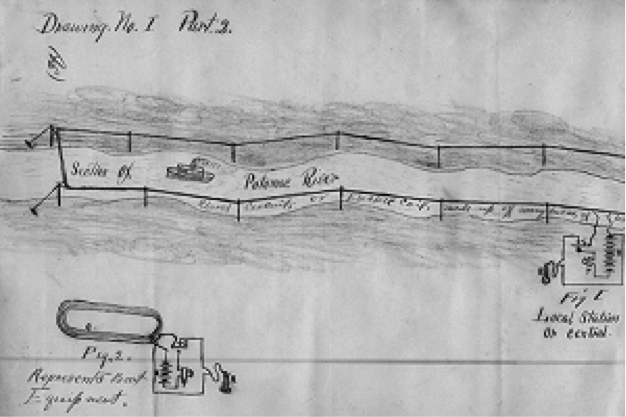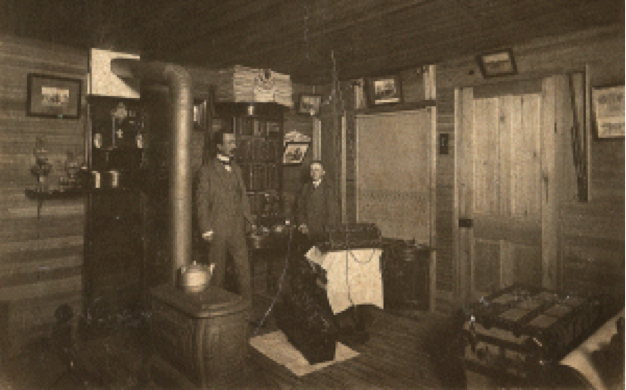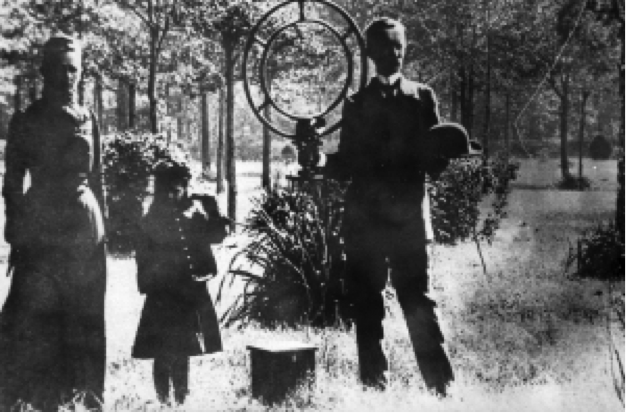Excerpt
Back on the Farm
When Nathan departed New York in June 1902 and left behind his invention, equipment, and documents related to them, he also ruled out any further work in natural conduction wireless telephony. Although Nathan never patented the device nor received anything but worthless stock from the Wireless Telephone Company of America, he was nonetheless under a contract that granted the company ownership of his invention. He had received at least $800 compensation for his work on the demonstrations. In his mind, the scoundrels had won this round.
He had two choices. He could devote his full effort to his family and farm, or he could revert to his original work with induction wireless telephones that he undertook before his agreement with the Wireless Telephone Company of America. Still convinced that he was on the verge of a technological breakthrough that would make him wealthy, Nathan chose the second path.

Never one to encourage visitors, Nathan became even more secretive in this phase. He felt that he had been compromised in his early wired telephone business and again by the entrepreneurs from New York. That was enough. Yet he also began to keep written records of his experiments, perhaps in preparation for a patent application. Bernard was now an experienced assistant. Nathan soon added other members of the family to the project, mainly as witnesses. His wife Ada and children Bernard, Pattie, and Victoria signed the following affidavit:
In order to establish date of New Invention in Wireless Telephony of Nathan B. Stubblefield for any future needs that might arise technical description herewith provided of apparatus used.
At home Jan. 15, 1903
This day Nathan Stubblefield transmitted wireless telephone messages one hundred and twenty five yards without ground connection his latest development in wireless telephony. This affidavit is the first documented message transmitted by this system through sixty yards space. This message was transmitted at 8 o clock night of Jan. 15 by Bernard Stubblefield and received by Nathan B. Stubblefield the inventor and received again by the below signed as witness.
Pattie L. Stubblefield

Since this device worked without a ground connection, it was totally dissimilar to his wireless telephone of 1902. Another affidavit, signed by Pattie and Victoria a year later, gave further details:
At home Jan. 23 of 1904
This is to certify that we the undersigned date above shown heard at a distance (roughly stepped) of six hundred feet harp music by Wireless Telephone, Nathan Stubblefield's secret invention where in no earth connection is used described as follows and understood by us.
Circular coils of No. 28 magnet wire 26 ft. in diameter with forty convolutions with forty eight cell dry batteries connected in with coil and carbon ball transmitter, as transmitter of messages
Receiver as follows two coils wire seven feet in diameter containing 33 convolutions each. First coil office wire No. 20 second or top coil of No. 20 Magnet wire with two bell receivers.
It is not understood by us or father whether it is by electromagnetic wave that this is done but well known that simply a primary current passes through coil and transmitter connected one to each distinct circuit or coil. Bernard B. Stubblefield transmitted music from coil just west of house, our home, to forked red oak tree on land east of our house, with its forks pointing north and south with poison ivy growing on its west side a snag of a tree with knot near top rather on the south side.
Given our hand this Sunday night Jan. 23 all with a view of establishing facts as they exhist [sic] for the future interest of Nathan Stubblefield the inventor and our father who was with us in this test.
The final two affidavits came two weeks later, on February 4. The first, signed by Bernard, Pattie, and Victoria, reads:
We the undersigned testify to the fact that this day a coil of No. 20 copper wire, the coil forty feet in diameter with 42 convolutions, with 48 cells of dry battery and a mycrophone [sic] transmitter was used in transmitting wireless telephone messages, conversation and harp music four hundred and twenty three yards from our residence with no sort of earth connection. A coil as receiver of 26 ft. in diameter of No. 28 magnet wire with 40 convolutions with a double pole receiver but no sort of earth connection. Other station lying westward in a woods from the home place located by a dogwood tree of small size known to us.
The second, also signed by the three children contains a note from Nathan at the end:
This is to certify that we the undersigned did this day receive wireless telephone messages, conversation and harp music four hundred and twenty-three yards distant from the transmitting station without any sort of earth connection by means of Nathan Stubblefield's new system of Wireless Telephony, claimed by him to be done through the Hertzian or electromagnetic wave process and practical for great distances, either stationary or portable.
Note: The above are sons and daughters of mine who understand the technical features of my inventions.

